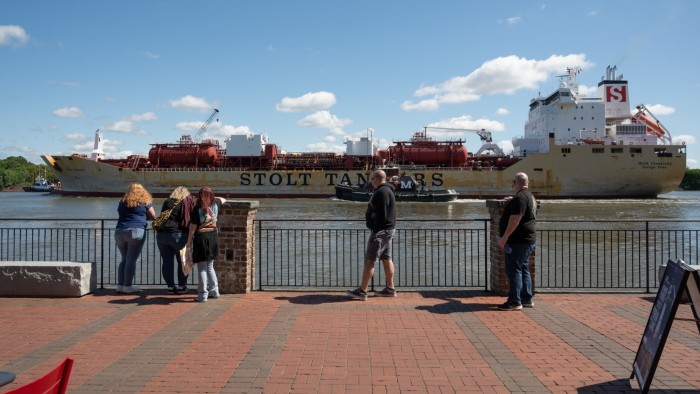Unlock the White House Watch newsletter for free
Your guide to what Trump’s second term means for Washington, business and the world
The writer is a former US national security adviser and chair of American Global Strategies
On April 9, President Donald Trump signed an executive order to revitalise US maritime power. The measure rightly focuses on reviving America’s shipbuilding capacity, one of our nation’s vital but forgotten industrial sectors.
It directs the formation of a maritime action plan to rebuild the shipbuilding, ship repair and port industries. It creates new maritime prosperity zones, focuses national attention on the training of mariners and directly takes on China’s practice of dumping commercial ships into the global shipping market.
In taking this action, Trump has placed himself alongside great maritime presidents like William McKinley and Theodore Roosevelt, who understood that American power comes from the wealth generated by trade, predominantly maritime, in the form of both fees paid to American-flagged ships and tariffs collected from foreign shipping lines at ports of entry. It is a view of the world that has been absent from the White House for far too long.
Most of our recent national conversations about shipbuilding have been focused on the US Navy. During Trump’s first term, Office of Management and Budget director Russ Vought and I, with the support of our staffs, attempted to lay out a workable plan to rapidly grow the navy. Our analysis suggested that no matter how much money we sent to “prime” shipyards, they could reach neither the capacity nor the rate needed to secure our maritime interests. This represented, then and now, a clear and present danger to the US, as our foremost adversary lays down warships at a pace that is two to three times what we can manage.
What became immediately clear was the deleterious impact that the drop in commercial shipbuilding from the early 1980s was having on our naval shipbuilding process. Without a thriving commercial shipbuilding industry, underpinned by a large and experienced shipyard workforce and an ample supply of downstream components, our industrial base deteriorated, affecting the same shipyards that built for the navy. As a consequence, naval vessels cost twice as much to build today, even adjusting for inflation, as they did at the end of the cold war.
This is why Trump’s direction to Mike Waltz, the national security adviser, to create a shipbuilding office focused primarily upon commercial shipbuilding is smart, both economically and militarily. The president understands that the maritime sector generates wealth at every stage of its lifecycle. At the construction stage every job in a shipyard generates five jobs elsewhere in the economy, from the mines where the metal is extracted from the earth, to the steel mills, to casting and forging factories, to advanced electronic firms that make the radars, navigating displays and computers that guide them.
Next, the ships themselves, American flagged and crewed by American merchant mariners, generate wealth coming from and going to foreign ports around the world. This income will increase exponentially as Trump’s proactive “art of the deal” leadership on negotiating “reciprocal” tariffs lowers trade barriers to US goods around the world, allowing the country to become a major net export nation again.
Economic arguments that commercial ships can be built and manned elsewhere more cheaply ignore the national security threat that a malign maritime hegemon such as China could pose. If China ever chose to withdraw its fleet from routes that service American interests over a policy disagreement, it would cripple our economy if there was no commercial American fleet to take up the slack.
It should be remembered that China used economic coercion during the Covid pandemic and would presumably not hesitate to do so again. This is the problem that Trump’s executive order is designed to mitigate. In a time of crisis, it is in the US’s interest to have the capacity to provide for itself upon the oceans.
The US used to understand what it was to be a maritime nation. China, in its attempt to establish hegemony over global shipping, clearly understands it now. Beijing massively subsidises its shipbuilding industry. It has built the largest commercial and naval fleets in the world, and they’re both growing every day. With his executive order to revitalise US maritime power, Trump is not only bringing back a vital American industrial capacity, he is also touching a vital part of the national soul.
An “America First” foreign policy must necessarily draw its energy from the US’s role as a global trading power. The nation’s location as the nexus between eastern and western markets makes it the crucial node in transoceanic trade, a position we must once again take advantage of.
